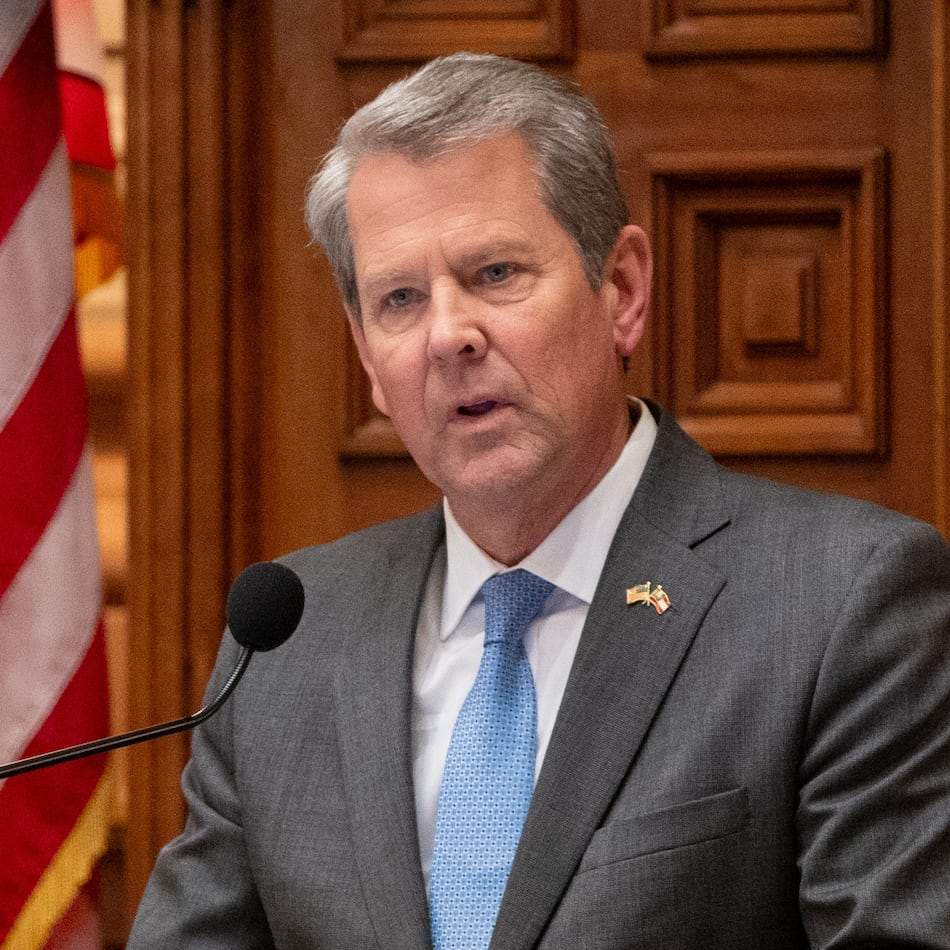In the throes of the COVID-19 pandemic, it was tough to discern what lifestyle changes would stick around versus fade away.
But nothing provides clarity like time — after all, hindsight is 20/20.
The viral outbreak and ensuing shutdown in 2020 introduced much of Atlanta’s corporate world to remote work, eliminating time-consuming commutes and making virtual meetings commonplace. For large employment centers like Atlanta, it raised questions about whether offices would ever be the same.
“You couldn’t script a better disruption into the office leasing business,” said Jim Caswell, founder and CEO of Atlanta-based brokerage firm Normandy Partners.
Five years later, the fog is starting to clear around what COVID-era workplace changes were blips and which ones are likely fixtures of a postpandemic workplace. Few things have been more clear than what office buildings are desirable and which ones are obsolete.
Metro Atlanta ended 2024 with a record-setting 32.9% of all office square footage either being vacant or available to rent, according to real estate services firm CBRE. Aside from one quarter last year, the glut of available office space in the Atlanta area has continued to increase.
Nicole Goldsmith, a broker with CBRE, said Atlanta’s office market statistics are “still a little daunting on paper,” but she said there’s optimism for those who read between the lines. The vast majority of that unwanted space is concentrated in a small percentage of buildings, often either older stock that hasn’t been recently renovated or in poor locations.
“Environment, location and amenities are the ultimate king of the castle right now,” she said. “That’s where people want to be. You could have the nicest quality office building in a bad location, and it’d be very tough to lease right now.”
Out of date office
High-end office space was desirable well before COVID, but the pandemic reset the playing field.
Companies now have to compete with the convenience of home offices and the flexibility of remote work. Some employers — including the federal government — have opted to bring the hammer down with return-to-office mandates. Many businesses feel pressured to invest in nicer workplace digs to avoid fears their workers would leave.
Michael Tucker, CEO of tenant representative firm Scotland Wright Associates, said that has rapidly changed the definition of what buildings aren’t up to snuff.
“If they’re three years out of date, it feels like they’re 10 years out of date because the world has changed so much,” he said. “The ones that are updating, changing and meeting some of the needs of today’s tenants, those buildings stand out in a real way.”
Credit: arvin.temkar@ajc.com
Credit: arvin.temkar@ajc.com
The deepening divide between buildings that are winners and losers has grown more stark over the past five years.
Top-quality buildings, which the industry calls trophy or class A, have much higher occupancies than their discount counterparts, often called class B. Nationwide, roughly half of class A buildings are fully leased or have less than a tenth of their space available to rent, according to real estate services firm Cushman & Wakefield. Another 20% of office buildings have their occupancy above 80%.
“If we just look at where the vacancy is concentrated, it’s in a very small subset,” said Abby Corbett, head of investor insights at Cushman & Wakefield.
Colin Connolly, CEO of Atlanta-based landlord Cousins Properties, has beat the drum repeatedly that office isn’t dead — only obsolete office is dead. It’s led his firm to aggressively acquire several office towers at stark discounts, including Atlanta’s Proscenium tower.
Connolly said all they need to succeed is an amenity refresh, since they’re in good locations.
“Companies, as they’ve made that (return-to-office) push have prioritized space in buildings that offer more than just four walls and desks,” he said. “They value amenities within a building … but perhaps the greatest amenity for our customer base is the neighborhoods outside our walls and what they have to offer.”
Patience for change
The challenge is there are so many offices that were good enough pre-COVID that now can’t compete, and they’re dragging down the entire market.
For seven of the past eight quarters, the region saw negative absorption, a measure of how much the office rental market is expanding or contracting, according to CBRE.
While class A buildings are performing better, an overall struggling market can carry broad consequences. Distressed buildings can shed their value, face foreclosure or lead to dead zones for street activity, which can ripple to affect better-performing neighbors and local government tax rolls.
The past year was the busiest year for lease signings since 2019, which has brokers and real estate analysts optimistic that some of that less desirable space may get scooped up soon. In addition, a record-low 474,000 square feet of new office space is in Atlanta’s pipeline, so there will be almost no new space to spur new competition.
“There’ll be a period of time where there will be no new (office building) deliveries in Atlanta,” said Will Yowell, vice chairman with CBRE’s Capital Markets Institutional Properties Group in Atlanta. “When you’re not delivering space in a growing economy, we will absorb the space and we’ll start to see that vacancy rate come down quite a bit.”
Credit: arvin.temkar@ajc.com
Credit: arvin.temkar@ajc.com
Caswell, of Normandy Partners, said unrealistic workplace expectations that were formed during the pandemic are also starting to fade. To initially woo back workers, he said many companies felt they needed “the coolest, most attractive office that was hip for employees like it was some silly mouse trap.”
“I think that the sensitives there have dwindled,” he said. “People still want high-quality office space, wherever they are, but it doesn’t need to have glass everywhere, have open ceilings and look like a Google HQ.”
The pandemic lasted long enough for some workplace habits to feel like they’d become permanent, Connolly said. While the office market is poised for a broad recovery in the coming quarters, he said it’ll take time for some of those habits to fade.
Credit: arvin.temkar@ajc.com
Credit: arvin.temkar@ajc.com
“The pandemic lasted longer than we all would have hoped, and ultimately, that was three-plus years of behaviors becoming entrenched,” he said. “Likewise, it’ll probably take three-plus years for those habits to become unentrenched.”
About the Author
Keep Reading
The Latest
Featured

